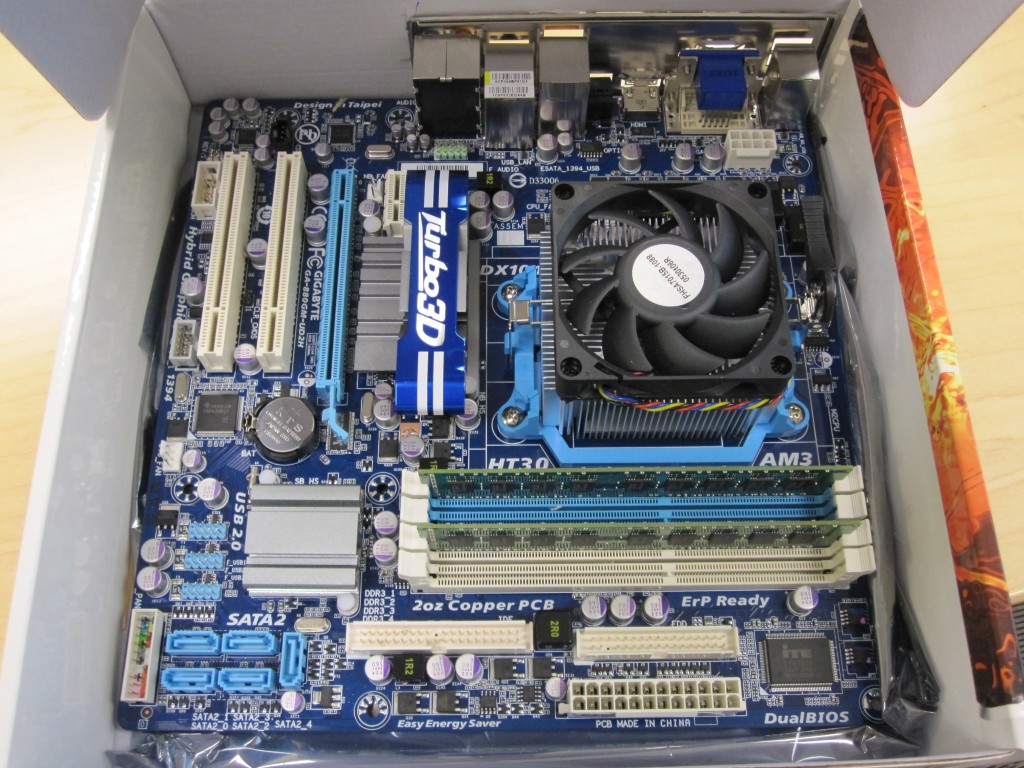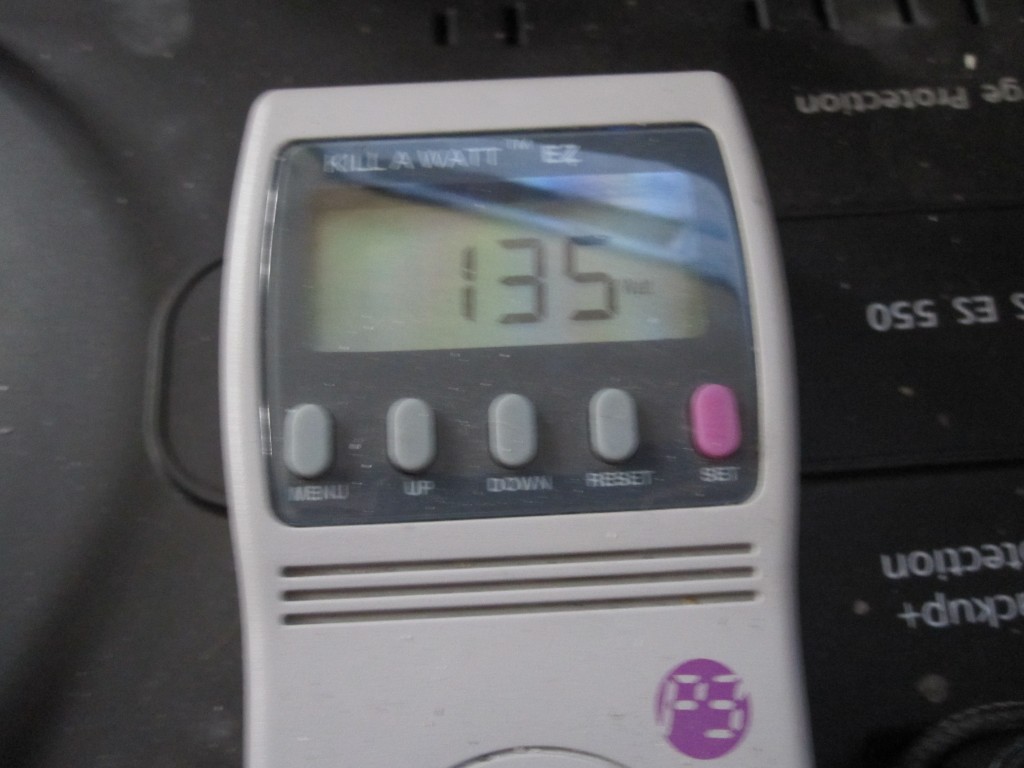Recently STH took a look at the AMD Athlon II X2 260 Regor chip and found it to be fairly power efficient and fast enough for most tasks. AMD has virtually every $5 increment in the sub-$120 CPU space covered, so today I am looking at a CPU that costs approximately $30 more, but has two additional cores. While the architecture between the Athlon II X2 260 and Athlon II X4 640 are similar, the dual core part runs 200MHz faster and has 1MB of L2 cache per core versus the quad core’s 512KB of L2 cache per core. It would have been nice to see a Athlon II X4 4MB L2 cache part, but for more on-die cache one can just look to the Phenom II line with its L3 cache, so the Athlon II X4 does make sense given AMD’s market segmentation. AMD has a CPU right in the Intel Core i3-530 and i3-540 range that is very competitive in terms of price/ performance.
I will keep this review relatively short due to the fact the Athlon II X2 260 review was quite lengthy, and this is essentially the same architecture with two more cores. For the quick synopsis, the Athlon II X4, as expected, uses more power but also provides much faster x264 encode times. The unexpected was how close the WEI score was to the Athlon II X2 260 Regor.
The Test Setup
I made a few tweaks to the test setup over the previous review. I felt the MSI K9N6PGM2-V2 AM3/AM2+/AM2 NVIDIA GeForce 6150SE Micro ATX (mATX) was not an appropriate home server motherboard and therefore switched it to the slightly more expensive, but much better Gigabyte offering, the GA-880GM-UD2H Socket AM3 880G mATX. In my workstations, I use quite a few Gigabyte boards, and they have been problem-free for me. My first WHS was also built on a Gigabyte motherboard, so I figured it would be fitting to use that as a test platform. Interestingly enough, the Gigabyte board does consume approximately 1w more at idle with both the Sempron 140 and Regor 260. That is not bad considering there is a gigabit (versus 10/100) network port, a HDMI port, and five internal SATA ports with one eSATA port (the MSI board only had 2 internal ports). Price wise, the board did cost me significantly more, approximately $45 more in a bundle so that is certainly a consideration.

As part of the switch, I moved to 4GB of Corsair ECC DDR3, this brings the platform more in-line with the LGA 1156 platforms although it is probably less representative of re-using old parts to make a home server where DDR2 is still an option of choice.
- CPU: Retail boxed AMD Althon II X4 Propus 3.0GHz, 2MB L2 cache, 95w TDP (socket AM3)
- Motherboard: Gigabyte GA-880GM-UD2H Socket AM3 880G mATX
- RAM: 4GB of Kingston ECC 1333MHz DDR3 KVR1333D3E9SK2/4G (Unbuffered)
- Hard Drives: Patriot PS-100 32GB / Seagate Momentus 7200.2 200GB
- PSU: PicoPSU 150XT with 150w power supply
Overall, this is a much better platform than the previous one.
Power Consumption
The Athlon II X4 640 Propus CPU is rated at 95w TDP and uses AMD Cool’n’Quiet to keep the idle power consumption low. How low? 41w (Kill-A-Watt watts) at idle in Windows 7 after everything has loaded:

This is not too bad. Accounting for the 1w difference in platform power consumption between the old platform and the new platform, there is about 6w of extra power draw at idle for two additional cores. During video encoding however, the Athlon II X4 started using a lot of power, 135w on the Kill-A-Watt:

Overall, for many WHS systems that sit at idle much of the day, AMD does a fairly good job with power gating to keep inactive cores from using a lot of power at idle. This is evidenced by the relatively similar idle power consumption numbers between the Athlon II X2 260 and the Athlon II X4 640. On the other hand, the load numbers look much like Intel Xeon X3440 and Xeon X3460 power consumption figures, yet the Athlon II X4 is no match for a Lynnfield based CPU in terms of raw performance.
Performance
Performance was generally in-line with what I had expected. The WEI score did not move much, but the Handbrake x264 encode speeds went up quite a bit.
Windows Experience Index (WEI) Score
I usually include the Windows Experience Index speed in CPU reviews because that is how Microsoft discusses the CPU power needed for video transcoding in Vail. Also, it is very widely available as it is a simple-to-use benchmark on most Windows 7 PCs. The Windows Experience Index (WEI) Score of the AMD Athlon II X4 640 was about as expected.

This is really good. For comparison, the Athlon II X4 640 is approximately one third the price of the Intel Xeon X3460 but the WEI score is 7.3 versus 7.6 for the X3460.
Handbrake x264 Encode Speed
My other favorite benchmark is encoding x264 video using Handbrake 0.9.4 on CPU’s. This is because many people store video files on their Windows Home Server, and video encoding/ transcoding takes a lot of CPU power. It oftentimes makes sense to utilize the Windows Home Server to do this encoding for iPods, iPhones, iPads, Zune HDs and etc rather than a main PC due to the fact that video encoding uses 90%+ of available CPU cycles, slowing down the system it runs on.
Here the Athlon II X4 640 did really well for a sub $100 part:

126 FPS is much faster encoding speed than the dual core Intel Core i3 and Core i5’s can offer, and also much faster than the Athlon II X2 Regor chip boasts. This is approximately four times real-time encoding so one can estimate that it will take approximately 15 minutes to encode 60 minutes of video. Just to give an idea of how this stacks up to some other popular home server CPUs:
| x264 Handbrake 0.9.4 Encode | |
| CPU | fps |
| Atom N330/ION | 21fps |
| Atom D510 | 23fps |
| Sempron 140 | 29fps |
| Athlon II X2 260 | 62fps |
| Q6600 | 84fps |
| Core i3-530 | 90fps |
| Core i5-650 | 97fps |
| Athlon II X4 640 | 126fps |
| Phenom II X4 955 BE | 151fps |
| Xeon X3440 | 155fps |
| Phenom II X4 965 BE | 160fps |
| Xeon X3460 | 179fps |
| Core i7 920 | 179fps |
This is a really interesting result because the scaling from the X2 260 to the X4 640 was over 100% in video encoding with twice as many cores but 200MHz less per core. If I had to explain the difference, it would be due to the DDR3 RAM in the new platform versus the DDR2 RAM found in the old platform. Still, it is nice to see AMD remaining competitive here at such a low price point. For someone that does a lot of handbrake transcoding to keep camcorder video compressed for iPhones/ iPod touches, this is a bit of an odd result, but it was repeatable and probably only about 4-5 fps better than I had expected so I think it is meritorious.
Other Considerations
Power/ performance wise, the Athlon II X4 640 clearly loses out to the Intel Xeon X3440 and Intel Xeon X3460 CPUs previously reviewed. This is to be expected as the Athlon II architecture is aging, and the Lynnfield architecture is more competitive with the Phenom II X4 architecture. With that being said, one should not underestimate the fact that there is also a $100 difference in the price to entry, meaning that saving a few dollars on the initial purchase is probably worth more than the difference in electric usage over a two to three year lifespan if the majority of the time the box is idling. The Lynnfield architecture is clearly superior when it comes to higher CPU utilization workload scenarios, but frankly, most home server users cannot tax a quad core CPU to 70% or more. With that being said, enabling things like compression, de-duplication, RAID-Z3 parity calculations, L2ARC and such on ZFS in either OpenSolaris or FreeBSD can use a lot of CPU power, but more than many home server users will see in media streaming scenarios. For a simple Windows Home Server v1 setup that is not doing video encoding, an Athlon II X2 260 or X2 250 or an Intel Core i3-530 or i3-540 chip makes a lot more sense.
Conclusion
AMD’s Athlon II X4 is a really strong performer at an attractive price point. The architecture is showing its age as the Phenom II X4’s boast a lot more speed. From a power consumption basis, it is fairly clear that the Athlon II X4 does a solid job keeping power consumption low at idle, but during heavy workloads power consumption spikes quite a bit. For a four to eight drive home server or NAS appliance where video encoding and virtualized workloads are intended applications, this is going to be a strong consideration for a lot of people as it saves over $100 versus a Xeon X3440 CPU while delivering most of the performance. In the near future I will look at the Athlon II X3 440 and Athlon II X2 250 on the new test platform to test AMD’s 3.0GHz range, but the Athlon II X4 640 does provide a fairly solid value for a lot of use cases.



